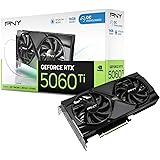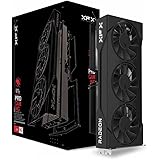The AMD Vega 64, released in 2017, was a high-end graphics processing unit (GPU) that aimed to compete with Nvidia’s top tier offerings. This post will explain the Vega 64’s specifications, its performance in cryptocurrency mining, and its relevance in 2025, considering its age and the advancements in GPU technology. It will also examine the power consumption, mining profitability and overclocking ability of this GPU.

Vega 64: Architecture and Specifications
The Vega 64 is built on AMD’s Vega architecture, which introduced several key innovations compared to previous generations. At the heart of the Vega 64 lies 64 Next-Generation Compute Units (nCU), totalling 4096 stream processors. These stream processors are the workhorses of the GPU, handling the parallel computations required for both graphics rendering and compute tasks. The GPU also features 256 texture units, responsible for applying textures to 3D models, and a transistor count of 12. 5 billion, reflecting the complexity of the design.
The Vega 64 has a base frequency of 1247 MHz and a boost frequency of 1546 MHz. The base frequency is the guaranteed clock speed under load, while the boost frequency represents the maximum clock speed the GPU can achieve under ideal conditions. However, the actual boost frequency can vary depending on factors such as temperature and power limits.
One of the most distinctive features of the Vega 64 is its use of High Bandwidth Memory 2 (HBM2). HBM2 is a stacked memory technology that offers significantly higher bandwidth and lower power consumption compared to traditional GDDR5 memory. The Vega 64 is equipped with 8GB of HBM2 memory connected via a 2048-bit memory interface, resulting in a memory bandwidth of 484 GB/s. This high memory bandwidth is crucial for demanding applications such as gaming at high resolutions and compute workloads.
The Vega 64’s specifications also translate to impressive theoretical performance figures. It boasts a peak pixel fill rate of 98. 9 GP/s and a peak texture fill rate of 395. 8 GT/s. These metrics indicate the GPU’s ability to process pixels and textures, respectively, which are important factors in determining gaming performance. The memory data rate is specified at 1. 9 Gbps, with a memory speed of 945 MHz.
Vega 64 and Cryptocurrency Mining
The Vega 64 gained considerable attention for its performance in cryptocurrency mining, particularly during the crypto boom of 2017 and 2018. Its high memory bandwidth and powerful compute units made it a popular choice for mining various cryptocurrencies.
The Vega 64’s mining performance varies depending on the algorithm and the specific cryptocurrency being mined. For Ethereum mining, the Vega 64 typically achieves a hash rate of around 34 MH/s at stock settings, which can be increased to approximately 40 MH/s with overclocking. Similarly, for Zcash mining, the Vega 64 can achieve a hash rate of 425 sol/s at stock settings, with overclocking pushing it to around 475 sol/s. In Monero mining, the Vega 64 can achieve 1750 H/s, which can be increased to 1950 H/s with overclocking.
The Vega 64’s mining performance extends to other cryptocurrencies as well. It achieves 793. 70 MH/s in KECCAK mining, 39. 69 MH/s in DaggerHashimoto (EtHash) mining, 2. 78 GH/s in Decred mining, 1. 3 kH/s in CryptoNight mining, 0. 32 GH/s in Lbry mining, 505. 92 Sol/s in Equihash mining, 1. 72 GH/s in Pascal mining, 12. 8 MH/s in X11GOST mining, and 0. 01 GH/s in SIACOIN mining.
Overclocking and Optimization
Overclocking can significantly improve the Vega 64’s mining performance, but it also increases power consumption and heat output. The Vega 64 can be overclocked by adjusting the core clock, memory clock, and voltage settings. A common overclocking configuration involves reducing the voltage by 20%, setting the core clock to 1500 MHz, and the memory clock to 1100 MHz.
Achieving optimal mining performance with the Vega 64 requires careful tuning and monitoring. It is essential to monitor the GPU’s temperature and power consumption to ensure that it is operating within safe limits. Undervoltage can help reduce power consumption and heat output without sacrificing too much performance.
Vega 64 in 2025: Relevance and Limitations
In 2025, the Vega 64 faces challenges due to its age and the advancements in GPU technology. While it remains a capable GPU for gaming at lower resolutions and settings, it struggles to keep up with modern titles at higher resolutions and refresh rates. Its power consumption is also relatively high compared to newer GPUs, making it less appealing for energy conscious users.
In the context of cryptocurrency mining, the Vega 64’s efficiency has been surpassed by newer GPUs. Its Ethereum mining efficiency is approximately 0. 135 MH/s per watt, while modern GPUs like the RX 7800 XT achieve efficiencies greater than 0. 4 MH/s per watt. This means the Vega 64 is roughly three times less efficient than modern cards. Given electricity prices, which range from $0. 10 to $0. 30 per kWh globally, the Vega 64’s high power consumption can significantly reduce mining profitability.

Summary of the AMD Vega 64 Specifications :
- Compute Units : 64 nCU
- Stream Processors : 4096
- Texture Units : 256
- Transistor Count : 12.5B
- Base Frequency : 1247
- Boost Frequency : 1546
- Memory Type : HBM2
- Memory Interface : 2048-bit
- Memory Bandwidth : 484 GB/s
- Peak Pixel Fill-Rate : 98.9 GP/s
- Peak Texture Fill-Rate : 395.8 GT/s
- Memory Data Rate : 1.9 Gbps
- Memory Speed : 945 MHz
- Memory Size : 8GB

Summary of the AMD Vega 64 Mining Hashrate:
- Ethereum Mining Hashrate : 34 MH/s
OverClocking Hashrate : 40 MH/s
- Zcash Mining Hashrate : 425 sol/s
OverClocking Hashrate : 475 sol/s
- Monero Mining Hashrate : 1750 H/S
OverClocking Hashrate : 1950 H/S
- KECCAK Mining Hashrate : 793.70 MH/s
- DaggerHashimoto [ EtHash : (ETH) & (ETC) ] Mining Hashrate : 39.69 MH/s
- Decred (DCR) Mining Hashrate : 2.78 GH/s
- Cryptonight [ (XMR) & (XDN) ] Mining Hashrate : 1.3 kH/s
- CryptoNightV7 Mining Hashrate : 1.3 KH/s
- Lbry ( LBC ) Mining Hashrate : 0.32 GH/s
- Equihash [ (ZEC – ZEN – ZCL) & (BTG) & (KMD) & (HUSH) ] Mining Hashrate : 505.92 Sol/s
- Pascal [ (PASC) & (PASL) ] Mining Hashrate : 1.72 GH/s
- X11GOST [ Sibcoin (SIB) ] Mining Hashrate : 12.8 MH/s
- SIACOIN (SC) Mining Hashrate : 0.01 GH/s
AMD Radeon Vega 64 OverClocking Settings :
- Voltage : -20%
- Core : 1500
- Memory : 1100
Power Consumption : 295 Watt/Per Hour





If you minimize clock (-14%) and minimize power consumption (-50%) and OC memory (1075mhz) also activate HBCC at minimize setting (around 12gb), I get average and a consistent 38MH/s mining ETH at 150w.
last driver 21.2.3 1100Mhz GPU Clock, 1137Mhz DDR5, GPU@900mV 150W GPU Power and 45MH/s
Hmmm confused am I…without much sweat I am getting 45.75 average Mh’s with TR on my Vega64 LQ and using less than 150W. Did I just get lucky or is it because it is Liquid Cooled version? FYI first-round settings are 995 Mhz Core Clock @ 930mv with VRAM at 1150 @ 950mv (set but I believe that does its own thing). The fan is spinning at 1135rpm (on the AIO) and the temp is 44c
Now I will start to tinker and see if I can get more Hash or less power….since this was a random dialled-in value set – pretty much a thumb-suck